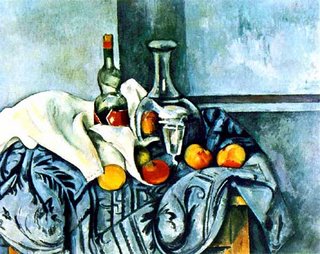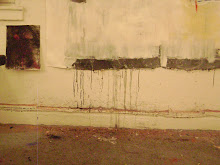Cezanne

Cezanne paints his apples the moment before they roll off the table. Or at least that is what he would like us to believe. His tables are uneven. Either his floors are extremely slanted or his tables have been curiously made with back legs higher than the front. His fabric sometimes spirals, often becoming a geometric form. My first study by a master painter was a Cezanne. A still life bursting with apples and cloth. The painting is abstract, I thought as I drew out my diagonals. Triangles, created by the folds in the cloth, the placement of the apples, the wall behind the table, work together to form the painting as a whole. A painting that is alive with color, rhythm, push and pull. Cezanne in Provence, the exhibit currently showing at The National Gallery in Washington DC, is mainly a landscape show, focusing on Cezanne’s native Aix and the nearby areas of Provence. His landscape palette, which is consistent throughout most of the works, is an array of browns, blues and greens. The landscapes are interesting but the few still lifes in the show have a different feel to them, a warmth that the landscapes sometimes lack, perhaps due to a sort of repition. Each still life seems to create its own landscape where fabric folds act as mountains and roads, apples and jugs pepper the landscape as if mimicking buildings. At times this landscape is flat against the picture plane and at times it retreats in space, creating depth and shadows. Cezanne’s still lifes are in a category all their own. Well before cubism erupted, he saw objects for not merely what they were but for the magic that could be found hidden in their colors and shapes.


0 Comments:
Post a Comment
<< Home